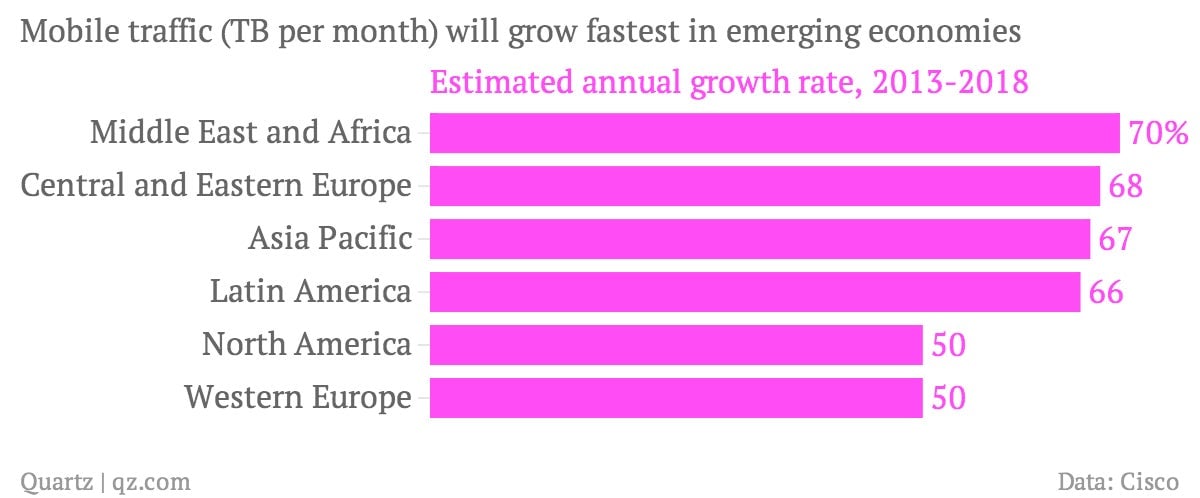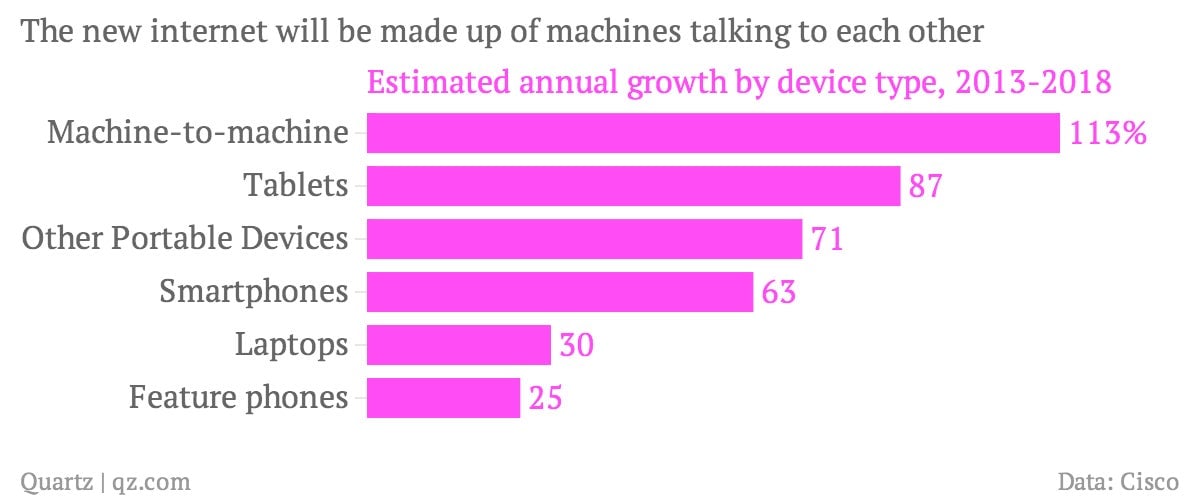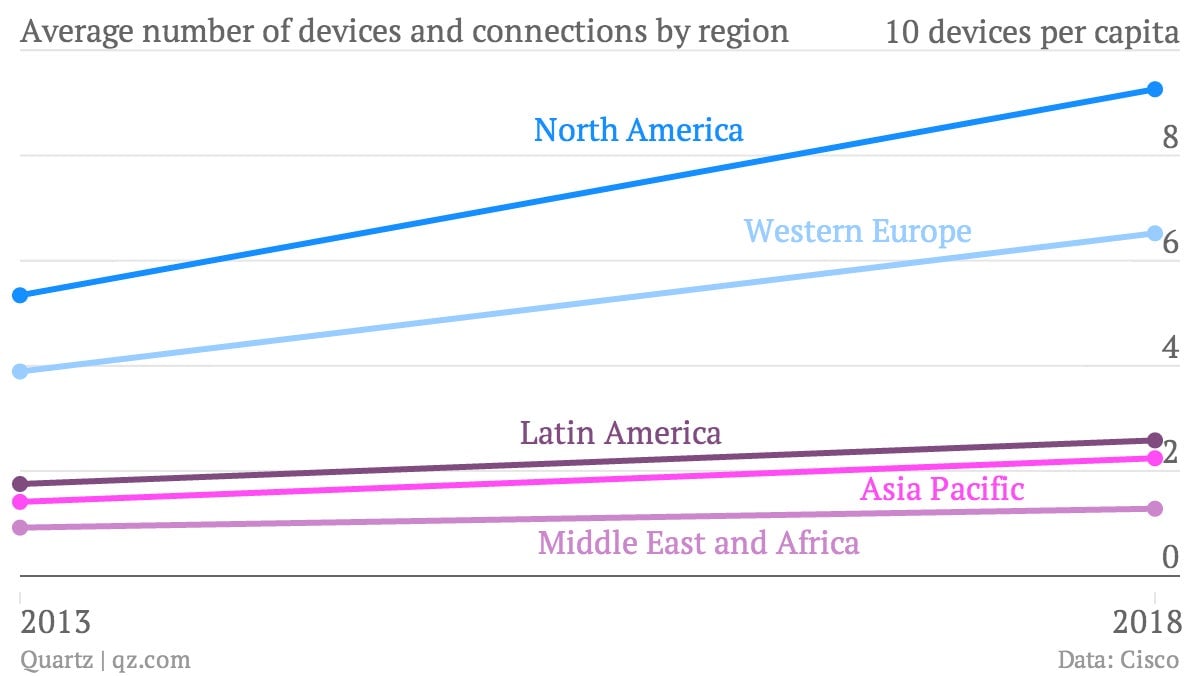Forget Africa: America’s machine-driven internet is growing much faster
Africa’s population of internet users is growing at a faster rate (pdf, p. 6) than anywhere else. So emerging areas of the world are the major internet growth areas of the future, right? Not exactly. Many developing regions are adding users an impressive clip, but the rich world is likely to continue dominating the growth of the web thanks to its next-level internet, on which most traffic will occur between machines.


Africa’s population of internet users is growing at a faster rate (pdf, p. 6) than anywhere else. So emerging areas of the world are the major internet growth areas of the future, right? Not exactly. Many developing regions are adding users an impressive clip, but the rich world is likely to continue dominating the growth of the web thanks to its next-level internet, on which most traffic will occur between machines.
Today Cisco launched the newest edition of its Visual Networking Index, which forecasts changes in internet traffic five years into the future. The report predicts that Africa will indeed see faster percentage growth in mobile internet traffic than anywhere else.

That mobile growth should be slower in the rich world, where mobiles are old news, is hardly surprising. But Americans, surrounded by Rokus and Fitbits, are getting acquainted with an internet that they use indirectly, through a host of machines that talk to one another. And that is where the real growth will happen. Cisco thinks the amount of data passed from machine to machine will grow 113% between now and 2018, compared to just 63% for smartphones.

Machine-to-machine devices—which make up what’s come to be known as the “internet of things”—are growing the fastest, and they are being adopted most readily in North America. Despite already having 5.34 connected devices per capita, more than anywhere else in the world, North Americans will also add such devices faster than anyone. They’ll be surrounded by over nine internet-capable things by 2018, the report predicts.

These data challenge the conventional wisdom that emerging and developed economies are digitally converging. The emerging markets may add millions of new human users relatively quickly, but without robust digital infrastructure, they will find it difficult to make the transition to a world in which any random object can have an internet connection. Chile has only now begun its transition from analog to digital television—a key policy that frees up precious radio spectrum for the mobile internet—and it is doing so ahead of many others.
Until that happens, the future of the internet will continue to lie primarily in the rich world.